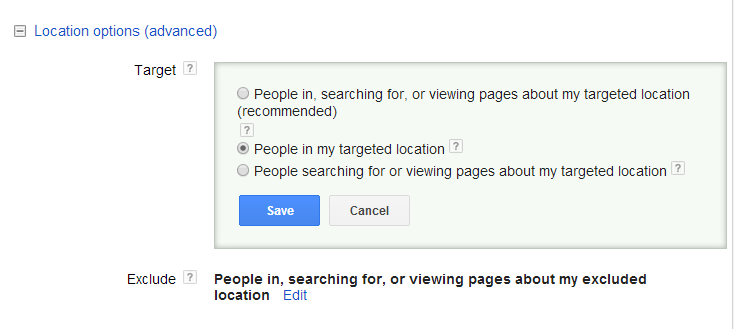Unless you have plans for world domination, your pay-per-click ads don’t need to be seen by everyone on the planet. It’s much more likely that the products and services you’re advertising will be limited to a handful of countries, cities, or even city blocks. This is where geotargeting comes in.
Geotargeting, or local PPC, is a feature that lets you target your search ads to only appear to customers in a certain location, or set of locations, that you specify. For businesses that rely on foot traffic (like restaurants), proximity (like used car dealerships by city), and deliveries (like an e-store that ships to certain countries but not others), geotargeting is an absolute no-brainer.
With geotargeting, you won’t squander your ad budget on wasted clicks from people who are outside your target area, and you’ll increase the chances that the people clicking on your ads are actually eligible to receive your products and services. In other words, geotargeting is essential if you want to make the most efficient use of your limited advertising spend.
In this guide, we’ll:
- Review the setup process for geotargeting (in Google Ads in particular)
- Explain how to manage a geotargeted campaign
- Share some tips and best practices for maximizing local PPC
Let’s get started!
Ready to find out what’s draining your PPC budget? Get a free Google Ads performance grade to learn where you’re struggling and how to fix it!
Geotargeting Setup
In Google Ads, select the campaign you wish to target, and click on the Settings tab. Scroll down to the Locations and Languages section, and click on edit under Locations.
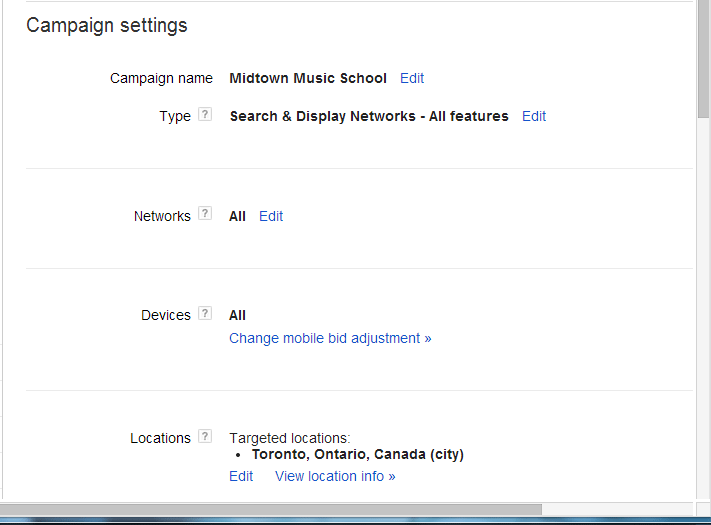
By Search
Click the Search tab and start typing in your desired location, and select it when it appears on the drop-down menu of relevant matches. Options include country, region (such as state or province), city, postal code, and even certain airports.
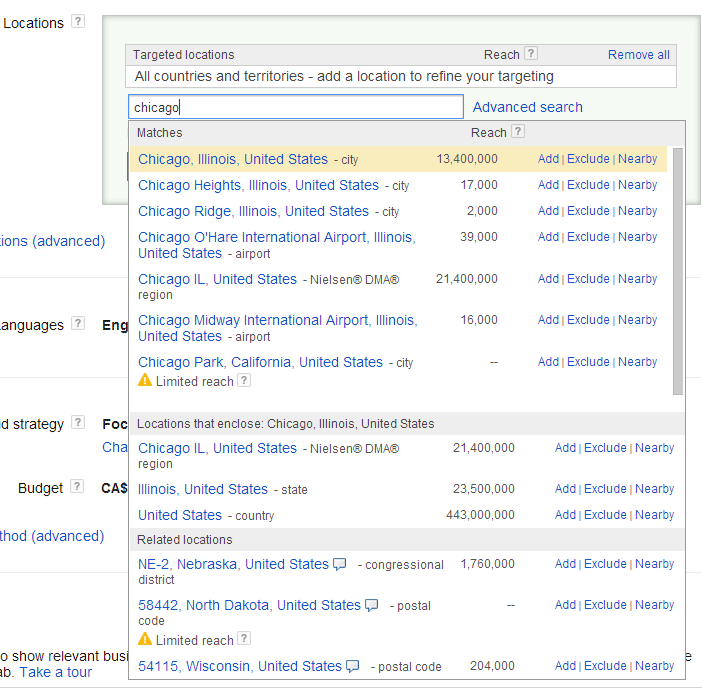
Reach refers to how many people could potentially see your ads if you select that location.
There are three choices you can click on for each location:
Add (adds that location to your list of targeted locations)
Exclude (prevent your ads from appearing to this location)
Nearby (generates a list of nearby regions that you might consider adding as well)
When you select a region, Google Ads will display a map with the targeted area highlighted.
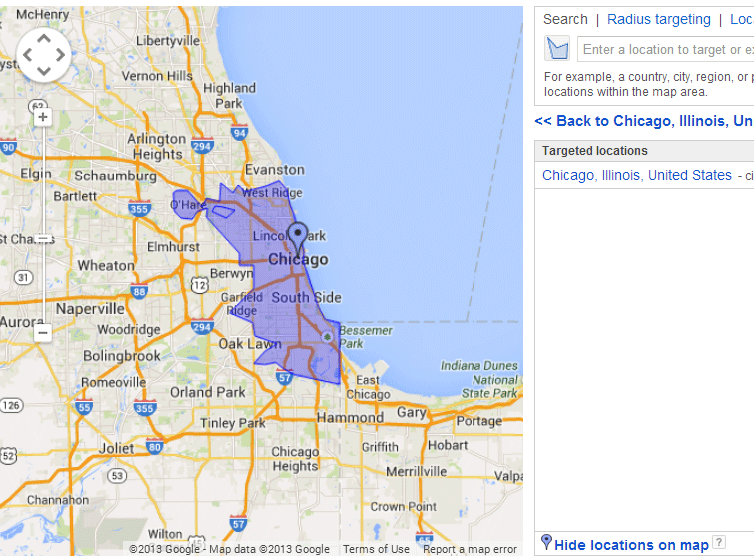
If you have multiple regions selected, they’ll all appear on a list. Under the Selected locations tab, click on Show locations to see a larger map with all of your regions highlighted.
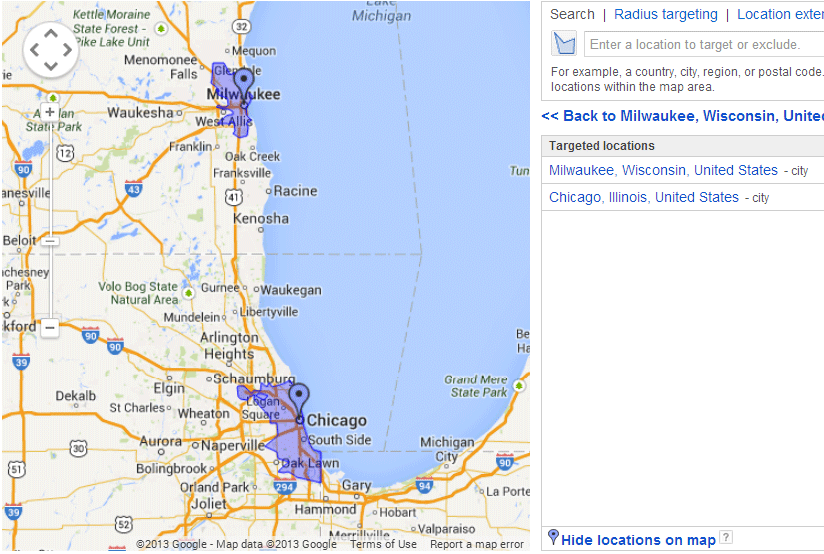
Advanced Options
By Radius
Click the Radius tab. This allows you to select a distance radius around a location of your choice, which is also called proximity targeting. Enter a location into the box, and that becomes the center of the radius. Specify the distance around the location that you wish to target by typing a number into the next box. The drop-down to the right of the number lets you specify whether the distance is measured in miles (mi) or kilometers (km). For example, you could specify 10 miles around the radius of a restaurant to target ads to customers who are searching within that area. (Combining this geotargeting functionality with your mobile-optimized ads could be powerful, since mobile searchers, especially in your area, tend to be ready to convert.)
In the example below, the ads will target a radius of 20 miles around Boston.
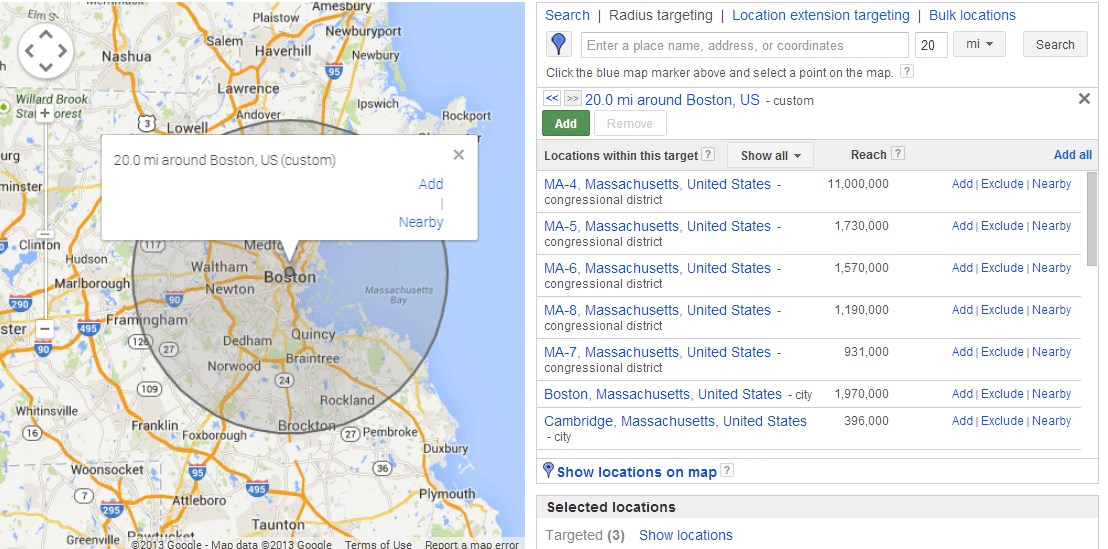
You can also create a custom radius by clicking the blue map marker icon to the left to select it, then clicking on any spot on the map to create the center of the radius.
Bulk Editing
Click the Bulk locations tab and you can either type or paste in up to 1000 locations at a time to add, exclude, or remove them in bulk. NOTE: Each batch of locations must be in the same country, and you can select the country code from the drop-down menu on the right.
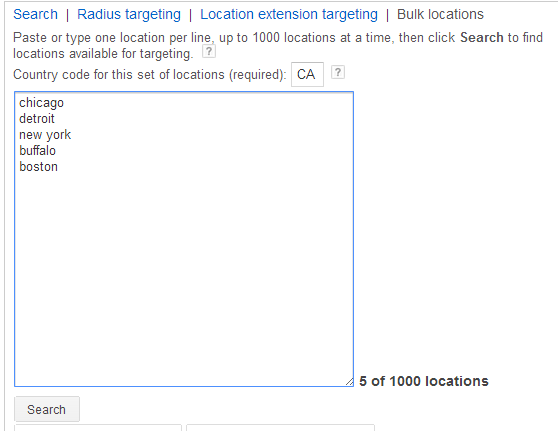
For your reference, here is Google’s official list of targetable locations.
Managing Your Geotargeted Campaign
See which locations are generating the most traffic by clicking on the Locations tab under Settings. Here you can view standard information such as clicks, impressions, average cost-per-click (CPC), and average position, as it applies to each of your specified locations.
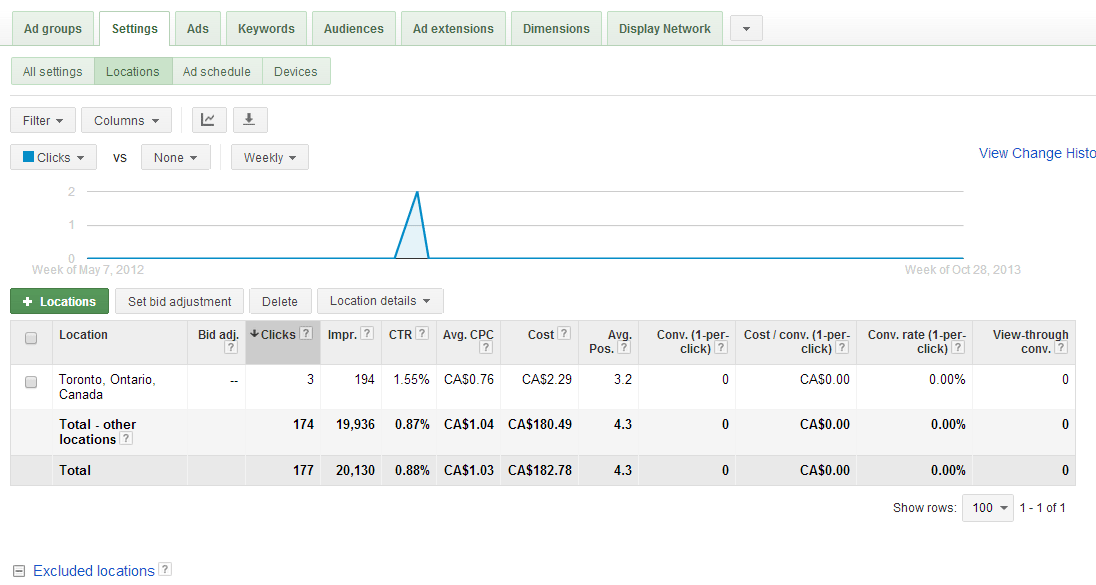
The Total – other locations row indicates all traffic from everywhere other than the locations you’ve specified. Unfortunately, Google Ads doesn’t get any more specific about where exactly they’re coming from, but if this number is very high you’ll want to add or exclude more locations, and follow the best practices listed below to create a more tightly targeted campaign.
Use the Search Terms Report to see which keyword searches triggered your ads. If you notice keywords from outside your target locations are triggering your ads, exclude these keywords by clicking the check box next to them, then selecting Add as a negative keyword. For example, if you run a car dealership in Chicago but your ads are being triggered by searches for “new cars Boston,” add the word “Boston” to your negative keyword list to avoid your ads being triggered by further searches for Boston. To bring up the Search Terms Report, go to the Campaigns tab, click Keywords, then Details, and select All from the drop-down menu to bring up the report for all keywords in the campaign.
Geotargeting Tips & Best Practices
Target the locations where your customers are. If you’re an online retailer who only ships within your country, target the whole country. If you’re a retail chain located in a specific region, like New England, target those states only, and exclude others. If you’re an e-store that ships internationally, target the countries that you ship to with your local PPC campaigns. This will ensure that you’re not wasting budget on searchers in areas that your business doesn’t serve.
Excluding certain locations can be just as important as targeting them. For example, if your company only ships products to destinations in the mainland United States, you could set your geotargeting to include the U.S., then exclude Hawaii and Alaska.
Gain regional insights about your customers by using tools like Google Trends to research which areas are most interested in your products or services. Google Trends can show you who’s searching for a given keyword by country, subregion (such as state or province), metro, or city. The example below illustrates the top U.S. states that are searching for the term “snow blower.” Not surprisingly, they’re all states that receive a large amount of snow.
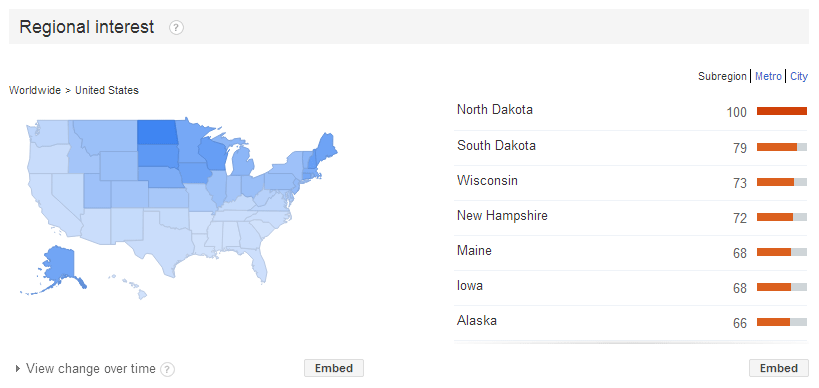
It’s still a good idea to include regional terms in your keyword lists. For example, an insurance company in Boston should include terms like “boston insurance companies” and “car insurance boston” – but thanks to geotargeting, you could also include more generic terms like “car insurance,” since geotargeting to Boston will ensure that the generic terms are only being seen by local searchers. Here is a fantastic free tool for quickly generating local keyword lists. (Unfortunately, it’s limited to U.S. locations.)
Where possible, try to include the name of your target location in your ad, preferably in the title. If the ad text matches the user’s search query, the relevant ad text will appear in bold, which helps the ad stand out on the page.
Enable location extensions and call extensions in your local ads so that customers will be able to find and contact you more easily. (Location extensions let you display your business’s address with the ad, and call extensions display a phone number.)
And finally, there’s an important setting in Google Ads that you should change to avoid getting ad impressions from outside your target location. By default, Google targets your ads not only to people within your specified target location, but also to people who are searching about your target location. To change this setting, go to Campaign Settings and click on Location options (advanced). Under the Target section, click “Edit” to open the drop-down menu, and select the second option (“People in my targeted location.”)
